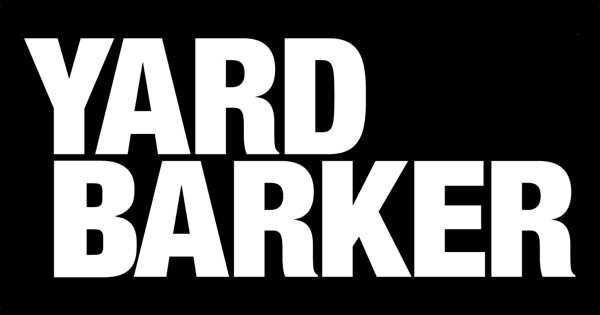Copyright The New York Times

A dystopia doesn’t come easy. On a weekday in early October, dozens of workers swarmed a building site in the Canary Wharf district of London that, as recently as March, had been a mere hole in the ground. Now, a three-story theater squatted among the skyscrapers. Inside a warren of steel girders, electrical cables and freshly milled wood, a man hung, suspended, testing a piece of flying equipment. Elsewhere, technicians trialed video sequences. The glass for the windows had arrived cracked. Fifty toilets had yet to be installed. Oliver Royds, a co-founder of Troubadour Theaters, which had commissioned the construction, seemed unbothered. “We open in two weeks,” he said, surveying the tumult in a hard hat. “It’ll be fine.” “Fine,” in this case, requires shocking violence, mass privation and the deaths of nearly two dozen children. Because this purpose-built theater would soon house “The Hunger Games,” a theatrical adaptation of the first novel in Suzanne Collins’s best-selling series, which has also birthed a successful film franchise. To succeed, critically and commercially, the stage version must balance the horror the novel describes with enough verve and spectacle to delight a discerning, CGI-attuned crowd. Are the odds in its favor? To triumph, Matthew Dunster, the production’s director, knew that he had to make the show as theatrical as possible. “Because that will be the only new thing about this,” he said. “People know the story from the book, they know the story from the film. What they don’t know is how we’re going to tell that story theatrically.” That appealed to Euan Garrett, the actor cast as Peeta, Katniss’s ally. “This is not a replica, it’s a reimagining of the story for the stage,” he said. “We have our own spin.” At about two dozen, the cast, which includes an onscreen cameo from John Malkovich as Panem’s president, is large for a stage play, but comparatively small for an epic. Dunster decided that the show should be ensemble-driven, with the mostly young adult cast playing multiple parts. And while the creative team includes both an illusions expert and a dedicated flying and special effects professional, deception is not the goal. The wires and gears are all meant to show. “You’re going to see all the mechanics of the tricks, but we’ll trust that once the moment happens, it’ll still be thrilling,” Dunster said. This “Hunger Games” is the latest attempt to translate venerable intellectual property —Paddington Bear, say, or the “John Wick” films, or the Harry Potter franchise — into live theatrical experiences. It is also, for the creative team, an attempt to argue that a work with obvious commercial sensibilities can shoulder real moral heft. Tristan Baker, the other Troubadour Theaters founder, who also heads the show’s production company, Runaway Entertainment, said he had read the novels as soon as they were published, even waiting up to buy the third at a midnight release. Though Runaway produces original works, like the ghost story show “2:22” and the elevated jukebox musical “Girl From the North Country,” Baker has also commissioned adaptations of popular children’s material, like “The Railway Children” and “Water Babies. He intuited that “The Hunger Games” could make a terrific stage show and one that might actually sell. “It’s extremely timeless, the idea of people inspired to make a better world,” he said. (Which seems like a sunny interpretation of the book, but sure.) “It’s still a story the wants to be told,” he added. Conor McPherson, a celebrated playwright and the book writer for “Girl From the North Country,” came onboard to write the script. “I said the more impressionistic we can be, the more theatrical it will be,” McPherson recalled. Like Baker, he also saw the story as ultimately uplifting. “Because at the heart of it, what you have is a character who in the face of adversity is overcoming all these obstacles,” he said. “Any young person watching is going to find that inspiring and hopeful.” In search of a director, Baker approached Dunster, who had directed “2:22.” Dunster, a prolific director of new plays and classics, knew the books, which his triplet children had recently read. He agreed with McPherson’s hunch that a successful theatrical adaptation should emphasize the liveness. Conversations around this new theater began just before the coronavirus pandemic in 2020, then halted. They began again once lockdowns were lifted, only to be paused again while planning permission was arranged. Construction started this spring. The theater, which can hold 1,200 spectators, is generously proportioned, with terrific ceiling height. (Baker estimated construction costs and production outlay at about 26.6 million pounds, or around $35 million.) But because the plot of land is comparatively small, there’s no wing space, which means that nearly every bit of scenery, and often the performers, must arrive onstage through the floor or from the ceiling. Staging scenes in the round offers distinct challenges. Charlotte Broom, the choreographer, had worked with Dunster often before, though typically in proscenium theaters where audiences watch performers face on. Now, she found herself scrambling from one side of the theater to the next. “You have to make sure you’re reaching every angle,” she said. At its core, the play depicts what Dunster described as “state-sponsored murder, killing children for entertainment.” Because he wanted audiences to feel both provoked and exhilarated, he exercised unusual care, he said, in staging the play’s most violent scenes, even adding in a blood consultant as rehearsals went on. “I wanted the moment where the children are killed to be horrific in their realism,” he said. But horror and realism don’t necessarily sell tickets. The show also has to be propulsive and genuinely spectacular — and more than a live, diluted version of the film. Mia Carragher, who plays Katniss, said she felt confident in the difference. “Because it is a stage version, I’m physically exhausted,” she said. “I don’t come offstage.” And a movie, she noted, would not offer live arrows whizzing past you. A stage version also allows “The Hunger Games” to implicate the audience. For example, Panem is divided into districts, and ticket buyers can choose which section to sit in, though District 12, Katniss and Peeta’s district, is not available. Tickets for the poorer districts are cheaper and typically farther from the stage.



